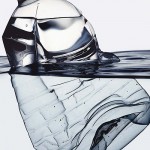
I have written in the past about my views on bottled water and the movement to ban it on several college campuses. Recently, Charles Fishman, an award winning investigative journalist and author of The Big Thirst posted a blog on National Geographic website that while pointing out the numerous problems and environmental impacts of bottled water went on to argue that:
“Banning bottled water doesn’t really teach anyone anything.”
His argument, which makes a lot of sense, is that banning bottled water sales on campus, while allowing the sale of soda and energy drinks is illogical. He points out that these products are 95% to 99% water and that, “It takes 2.5 liters of water to produce every liter of Coke products”.
Fishman points out the negative environmental impacts of bottled water, stating that “It takes a fleet equivalent to 40,000 18-wheelers just to deliver the bottled water Americans buy every week”. However, he questions whether this is any different than the fleets delivering caramel-colored, caffienated water in bottles?
Fishman is no stranger to the negative impacts of bottled water. I highly recommend his 2007 article, Message in a Bottle which explores the bottled water phenomenon in depth. In that article he determines that:
“Buying bottled water is a choice … and given the impact it has, the easy substitutes, and the thoughtless spending involved, it’s fair to ask whether it’s always a good choice.”
In my opinion, that question has been answered over and over. Due to its negative environmental impacts, bottled water is only a good choice where there is not access to safe reliable tap water. On most college campuses in the U.S. safe drinking water is readily available, as are reusable bottles.
USA Today states that according to the Association for the Advancement of Sustainability in Higher Education (AASHE), 14 colleges and universities in the United States and Canada have campus-wide bans, while another dozen or so have bans that cover a portion of campus. While these bans are a step in the right direction by creating awareness of the negative impacts of bottled water, by not addressing the environmental and health impacts of the remaining beverages, including soda and energy drinks, they fall far short of promoting an overall sustainable college environment.
However, recently the University of Vermont became one of the first universities in the U.S. to not only ban the sale of bottled water but to mandate that one-third of the beverages in its campus vending machines be healthy options. The policy also has the University changing its drinking fountains into bottle refilling stations so that students can use refillable bottles instead of using, and disposing, of plastic water bottles.
Wisebread.com has listed 22 reasons to stop drinking soda – Here are a few of my favorites:
- It may lead to diabetes and heart disease.
- Soda consumption is linked to osteoporosis.
- Drinking cola can increase your risk of kidney stones.
- It can take up to 132 gallons of water to produce a 2-liter bottle of soda.
- Be it glass, aluminum, or plastic, all bottles have their environmental costs.
- Transportation of soda pop requires a lot of fuel.
Sustainability has social, environmental and economic dimensions. Given the health and environmental impacts that soda has, the fact that the United States, with less than 5 percent of the world’s population, is the largest soda consumer and accounted for one third of total soda consumption in 1999, suggests that Fishman is correct that only banning water bottles on campus is not enough. To truly address the societal and environmental costs, our colleges and universities should, as did the University of Vermont, require the availability in vending machines, in dorms, food service on campus, healthier alternatives to soda.
Here is a very interesting infographic about why you should not drink bottled water …

Let me know what you think about bottled water and soda issues on campuses around the country, please leave a comment below!
![]()

